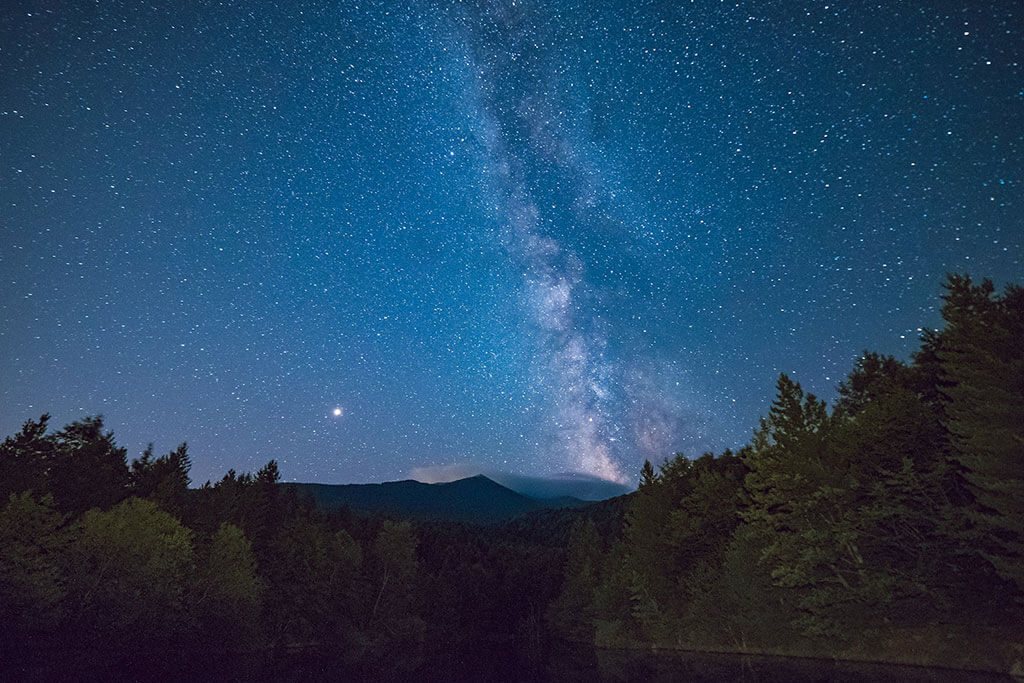
11
March
Hamilton Amateur Astronomers: Light Pollution: The Black Eraser
Long ago Vincent van Gogh said, “The lamps are burning and the starry sky is over it all.” How times have changed with the emergence of light pollution. Today, bright city lights are burning all over the evening sky outshining the greatest night show on earth to the detriment of future generations. If the starlight storytellers are to disclose the tale of the universe, then the night needs to stay alive. This lecture presentation will examine light pollution from its onset; discuss its consequences, and then outline the proactive measures one can take to curb its effects.

19
March
UofT AstroTour: Earth Hour Event – What If Earth Was No Longer Habitable?
Speaker: Prof. John E. Moores, York University

16
March
ASX/The Star Spot: Moving to Mars? A Panel Discussion on the Ethics and Logistics
Human survival depends on planetary settlement. While Mars is the top candidate for hosting human settlers, significant ethical and logistical controversies surround the prospect of sending humans to the Red Planet. ASX has assembled a team of experts to examine those questions. Is there an ethical way to put humans on Mars? Can we search for Martian life without harming it? Are there any contemporary projects that could feasibly send humans to Mars? If not, when will we be able to launch a Mars mission? And does Canada have a role in the future of space travel and planetary settlement?

2
March
Perimeter Institute: The Dark Side of the Universe
Prof. Katherine Freese, Department of Physics, University of Michigan
The ordinary atoms that make up the known universe, from our bodies and the air we breathe to the planets and stars, constitute only 5 percent of all matter and energy in the cosmos. The remaining 95 percent is a recipe of 25 percent dark matter and 70 percent dark energy, both nonluminous components whose nature remains a mystery.

25
February
ASX Star Talk: The World Records of the Universe
We all love it when a world record is broken. But the records set here on Earth are puny and pathetic compared to those set elsewhere in our vast cosmos. What’s the coldest place in space? What’s the fastest object in the Universe? What’s the biggest object we’ve ever seen in space, and the smallest? How weak and how strong does gravity get? Join astronomer Bryan Gaensler for a tour of the extremes of our amazing Universe.

3
March
RASC Hamilton: Astrophotography Using Portable Mounts
Speaker: Michael Watson, RASC (Unattached)

31
March
UofT Planetarium: ASTRONOMY’S GOLDEN AGE: Planetarium Shows in Aid of Syrian Refugees
Showtimes: 7:00pm, 8:00pm, and 9:00pm
Centuries before Galileo observed the moons of Jupiter, scientists in the Middle East were building the first cameras and developing the physics of light. Without the benefit of modern technologies, they took some of the first steps in understanding the motions of the planets and in explaining the nature of the Universe.

24
March
UofT Planetarium: ASTRONOMY’S GOLDEN AGE: Planetarium Shows in Aid of Syrian Refugees
Showtimes: 7:00pm, 8:00pm, and 9:00pm
Centuries before Galileo observed the moons of Jupiter, scientists in the Middle East were building the first cameras and developing the physics of light. Without the benefit of modern technologies, they took some of the first steps in understanding the motions of the planets and in explaining the nature of the Universe.

10
March
UofT Planetarium: ASTRONOMY’S GOLDEN AGE: Planetarium Shows in Aid of Syrian Refugees
Showtimes: 7:00pm, 8:00pm, and 9:00pm
Centuries before Galileo observed the moons of Jupiter, scientists in the Middle East were building the first cameras and developing the physics of light. Without the benefit of modern technologies, they took some of the first steps in understanding the motions of the planets and in explaining the nature of the Universe.

4
March
UofT Planetarium: ASTRONOMY’S GOLDEN AGE: Planetarium Shows in Aid of Syrian Refugees
Showtimes: 7:00pm, 8:00pm, and 9:00pm
Centuries before Galileo observed the moons of Jupiter, scientists in the Middle East were building the first cameras and developing the physics of light. Without the benefit of modern technologies, they took some of the first steps in understanding the motions of the planets and in explaining the nature of the Universe.
